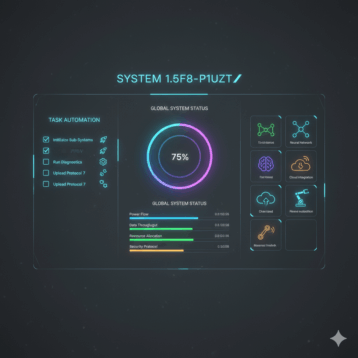
In 2022, the United States Department of Commerce estimated total ecommerce sales at $1,034 billion, up 7.7% from 2021. These figures show that more consumers are willing to shop online each year, and retailers competitive enough to tap into this trend can increase their sales and accelerate business growth.
However, the above is only possible if an enterprise has the right ecommerce solution built upon an ecommerce project architecture that is scalable and up to date. This article provides several ways that ecommerce enterprises can modernize their software architecture and become more technologically flexible and competitive.
Adopt a Microservices Architecture
In a traditional monolithic architecture, all software elements such as intranet operate as a single solution and are tightly coupled and highly dependent on each other. In contrast, the microservices architecture implies developing and deploying software as a combination of interrelated but independent components (services).
Today, microservices architecture is becoming increasingly popular across multiple industries, including ecommerce. According to the Microservices Architecture Market report by IMARC Group, the global microservices architecture market will reach $6.84 billion by 2027, growing with a CAGR of 15.70% during 2022-2027.
In practice, the adoption of microservices can bring an ecommerce enterprise multiple benefit:
1) Technological Flexibility
As mentioned, each microservice operates independently and can be easily replaced or modified by an enterprise’s request. This allows developers to quickly expand and change the software’s functionality or integrate it with new technology, easily adapting it to ever-changing customer needs.
2) Increased System Resilience
Since microservices operate independently, developers can improve a particular software component without disrupting the entire ecommerce system. This way, ecommerce enterprises can reduce many IT risks associated with software maintenance.
3) Improved Delivery Speed
Each microservice is typically managed by a small separate team. Therefore, especially if using continuous integration and continuous delivery (CI/CD) practices, developers can deploy updates and upgrade ecommerce functionality in near-real-time.
Also, according to the same report by commercetools, 68% of ecommerce enterprises note it takes three months or longer to take new commerce solutions to market. With microservices, developers can reuse the code from another software.
Going Headless
Headless is one variation of the microservices concept that implies separating the front-end of a CMS solution (the presentation side) from its back-end (the server side). In their 2022 report, Future Market Insights state that the headless CMS market is going to reach more than $5.5 billion by 2032, showing a CAGR of 22.1% between 2022 and 2032.
So why should enterprises choose the headless approach when developing ecommerce CMS? Compared to a monolithic architecture, where a system’s backend and frontend parts are tightly tied, headless provides a more advanced level of technological agility.
The main advantage is that headless allows developers to attach different “heads” to the “body” of the ecommerce CMS solution. Thus, ecommerce enterprises can utilize their back-end with any type of interface and device, optimizing and accelerating content delivery across all digital channels.
Migrating to the Cloud
Today, thousands of enterprises across industries choose the cloud when considering hosting for their software. The 2022 Cloud Computing Platform Market report published by Research and Markets reveals that the cloud computing market will grow from $545.8 billion in 2022 to $1240.9 billion by 2027 at a CAGR of 17.9% during this period.
One of the reasons for such popularity is that cloud migration is a natural step towards a more future-proof and flexible software architecture. With cloud hosting, enterprises can smoothly scale their ecommerce solutions on demand, expanding the software system accommodate business growth and tailoring it to changing market conditions.
1) Vertical scale
Hosting their software in the cloud, enterprises can scale computing resources on demand, for example, when increasing the number of software users.
2) Horizontal scale
Additionally, enterprises can scale cloud-based databases or functionality anytime.
Implementing the MACH Architecture
Created in 2018 by commercetools, the MACH architecture combines concepts such as microservices, headless, and cloud in a unique technology mix. Currently, MACH is one of the world’s most innovative and promising ecommerce architectures.
Given the novelty of the concept, few brands have implemented MACH into their tech stacks so far. Therefore, early MACH adopters get a great chance to gain an outstanding competitive advantage.
However, if an enterprise aims to implement MACH, it should not waste time. According to the 2022 Enterprise MACHified study by the MACH Alliance, 79% of business leaders plan to increase their MACH investment in the coming months.
Also, it’s important to note that MACH is a very demanding architecture as it consists of complex technologies that need to work correctly with each other. This makes MACH development quite challenging and costly. Therefore, an enterprise not only needs to find developers with a wide range of professional skills but also be able to support complex and multi-layer architecture in the long run.
To ensure MACH viability and determine the most cost-effective adoption approach, enterprises can consider hiring third-party ecommerce consultants to take over the technical aspect of the project if necessary.
Final Thoughts
The ecommerce industry is growing together with the number of online transactions, and competitive retail businesses can use this trend to increase sales and thus grow faster.
If an enterprise aims to modernize its existing software architecture, it should consider adopting microservices, headless, or cloud or implementing all these technologies together within the MACH concept. However, we would recommend that enterprises consult ecommerce experts before starting their projects to ensure successful architecture transformation.










